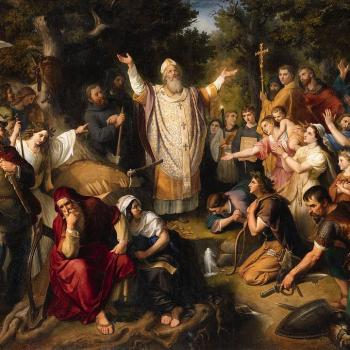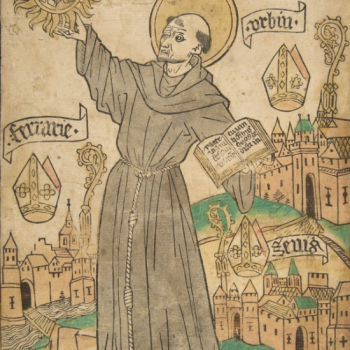It is because of this tendency that I think that it is common to see new liturgical expressions emerge soon after a part of the liturgy that was at one time more flexible begin to become more calcified. I might even argue that if this doesn’t happen it might be a good indicator that the liturgy is no longer a central element of cultural piety. The emergence of the apologiae throughout the mass is one example of this adaption happening in the soft tissue or the liturgy.
As the Carolingians began to use Roman liturgical practice to try to bring cohesion to the various Frankish groups they now controlled the Gallican piety in the Frankish liturgy was supplanted by a Roman style and the mass became a great deal more calcified. Areas of the mass that had been more flexible were now restricted. I believe this is one of the reasons that the apologiae emerged. These were personal prayers of self-accusation prayed at the foot of the Cross by the priest before Mass. Many of the prayers were Gallican in origin and helped maintained the regional piety of the people in the midst of Romanizing initiatives (although many of the prayers were pseudepigraphaly attributed to famous saints like Augustine or Ambrose).
These prayers began in a very “soft” area of the mass, the beginning, and from there influenced the more connective tissue. People began to join the priest in prayers of confession, sometimes after the sermon at at other times as Mass was starting. (Nocent, 195) The apologiae evolved into the Confitior and is seen today as a prayer of confession prayed by the people as part of the introductory rites. The Kyrie might be another example of this, having it’s origins in the litanies accompanying Byzantine processions as the people moved toward the Hagia Sophia for Sunday liturgy. Both evolved in the Western Liturgy and made their way into the “soft tissue” of the introductory rites.
I believe taking notice of these kinds of evolution is very exciting. Liturgy is by nature a living thing. The real text of the liturgy is really the context in which it is celebrated. Noticing these moments where a “sorte cle revanche de la créativité” (Nocent, 194) is put in place when other parts of the mass freeze, is not only critical to understanding how and why the liturgy changes, but also helps remind me that the worship of the church is still something that happens as individuals encounter God in their own lives and bring that experience into the life of the whole church as she meditates on the mystery of Christ.
Nocent, Adrien. “Les apologies dans la celebration eucharistique,” in Liturgie et remission des péchés. Conférences Saint.-Serge, XXe Semaine d’Études Liturgiques 1973, pp. 179-196. BEL Subsidia 3. Rome: CLV-Edizioni Liturgiche, 1975.













